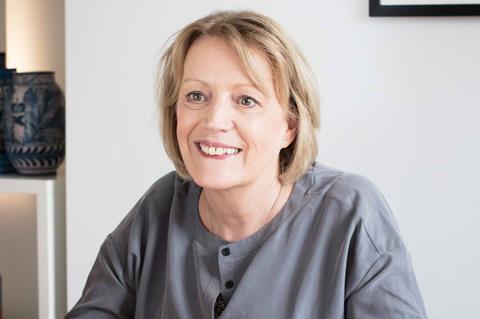Louise Rodgers explores the concept of how becoming a “design coach” can help deliver more effective management and leadership

My coaching partner and podcast co-host Rachel Birchmore and I recently spoke with Jo Wright, Managing Director of global architecture practice Perkins & Will’s London studio, for an upcoming episode of our podcast Coaches On The Couch.
One of the things that Rachel and I were curious about is how Jo has slaked her passion for design, when her job, as she describes it, is to “get her arms” around every aspect of the whole business, rather than be involved with the nitty gritty of design. It led to an interesting discussion about how she sees herself as a “design coach.”
A common challenge for practice and design team leaders is learning how to ‘let go’ of some of the day-to-day of their role as architects; stepping back from being involved with every detail so that they can focus on the overall management of the project as well as the development of the business.
Those that don’t manage to do this risk stifling the design talent they employ, or at the very least frustrating them. Somehow, they need to learn how to manage the creative process, and creative people, without getting in the way. This is especially hard when they hold ultimate responsibility for the creative output.
Becoming more of a design coach is one way to achieve this. If you are leading a design team, the team should be your primary focus; providing them with an environment in which they can do their best work is your responsibility. Consistently practicing some core coaching skills will help to do this. What does this look like in practice?
Having a sense of belonging is an essential part of finding work meaningful
First of all, listen like a coach. When asking for ideas, listen. When asking for opinions, listen. Give your team the gift of your whole, undivided, attention even if you already have your own ideas about what should happen and be prepared to change your mind. Having empathy and understanding of other people’s perspectives can be hard, but it is an essential skill of a team leader.
Secondly, think like a coach. One of our mantras as coaches is, ‘the mind that holds the problem holds the solution’. We trust the person we are coaching to know what to do and understand that our job is just to help them get there. In architecture, where people on a team have different levels of experience, this may not always be true, but it may be true more often than you realise. Has this person had the time they need to move towards a solution, or do they need a little longer?
Finally, speak like a coach. Even if someone does require more direction, be curious about how their mind works and ask them open questions to guide their thinking. Have you heard all their ideas? Is there something they may have thought of, but not had the confidence to voice? Can you hold back from providing the solution just a little bit longer to give them space to think, and perhaps come up with a better solution?
Of course, the creative process is not entirely democratic and ultimately steering the ship in the right direction is your job. Ideas are just ideas, but if everyone feels they have had a chance to express theirs no one will be offended if you step in to make decisions when necessary.
There are additional benefits to practicing this approach. If your team feel involved and empowered, they are also likely to feel they belong. Having a sense of belonging is an essential part of finding work meaningful. This should include feeling safe to speak up and not fearful of making a mistake or, even worse, being ridiculed for their ideas. Being ‘seen’, valued, and respected for their individual contribution keeps people engaged and helps to build a happy and productive workforce, so it is also good for business.
I can almost hear some people saying, “But that all takes time, and it is time I just don’t have.” It’s controversial, I know (although it shouldn’t be), but building time into project timelines to allow more opportunities for collective and collaborative thinking has benefits beyond the life of a particular project. It makes individuals and teams more resilient and enables and encourages them to do their best work. It is also the job of a leader, so if you are not doing this, are you being a leader, or just a manager?
Postscript
Louise Rodgers is Building Design’s professional coach. A personal and business coach, she co-created and co-delivers Step Up, a leadership development programme for built environment consultants.
Do you have a question for Louise? If so email louise@eidyia.co.uk. She will use the most interesting in her columns but cannot enter into individual correspondence.
















No comments yet